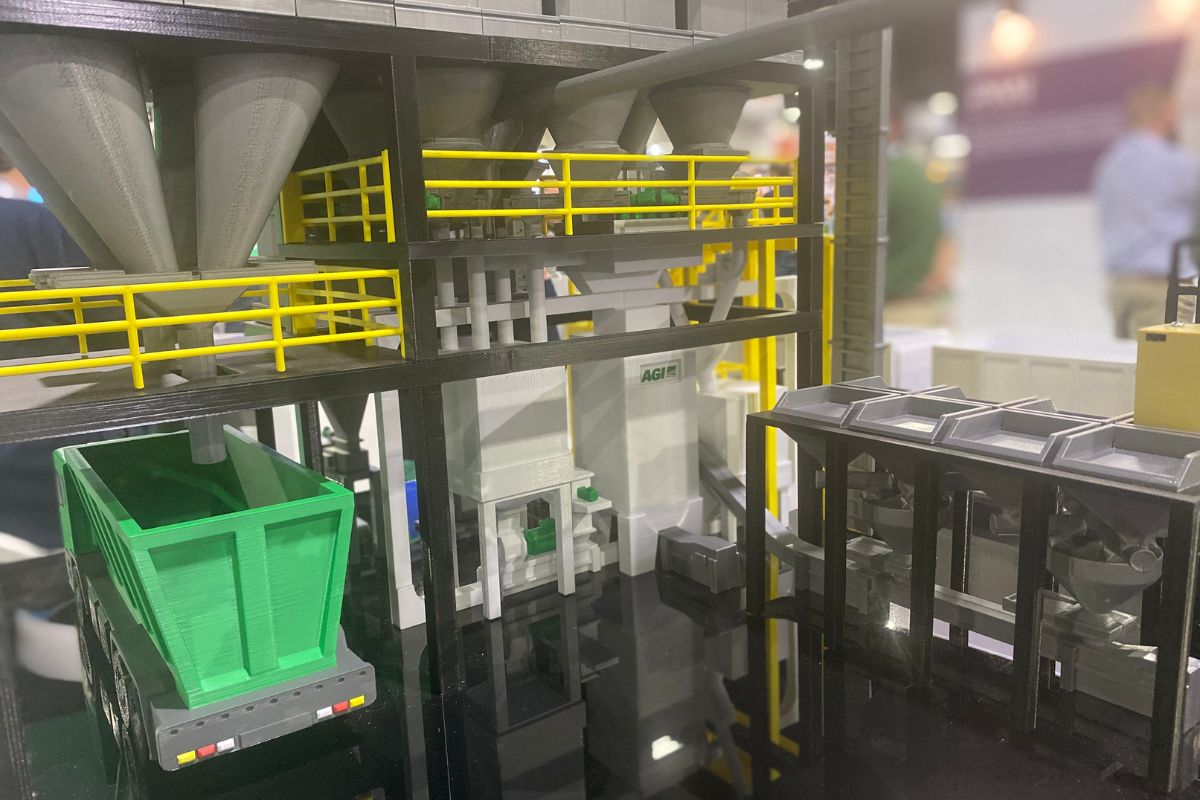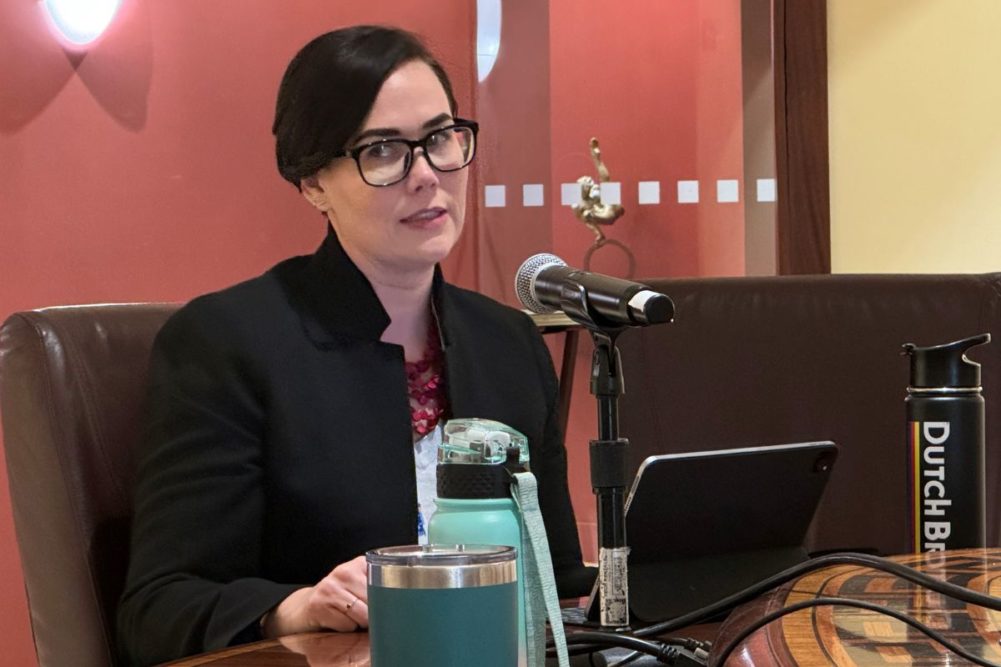ATLANTA, GEORGIA, US — With US agriculture exports facing strong trade headwinds, including the strength of the US dollar and increased competition, market diversification is a priority, said Alexis Taylor, US Department of Agriculture undersecretary for trade and foreign agricultural affairs.
Taylor spoke with reporters during the International Production and Processing Expo (IPPE) taking place in Atlanta, Georgia, US, this week.
“Diversification is an important tool as we think about maximizing growth opportunities as well as a way to hedge risk of market contraction and general volatility in the global marketplace that we have seen now for several years,” she said.
Taylor noted that 60% of US agricultural exports are going to just four markets: China, Canada, Mexico and the EU.
Some areas where the USDA sees growth opportunities include Africa, Latin America, the Middle East, south and southeast Asia.
While those markets are important, and the USDA will continue to invest in them, there are new demographic trends happening.
“We want to encourage market diversification and help our industry really explore what other markets might open new opportunities for them,” she said, noting that the USDA announced in October $1.2 billion in new funding for the Regional Agricultural Promotion Program.
Some areas where the USDA sees growth opportunities include Africa, Latin America, the Middle East, south and southeast Asia.
There’s a lot of untapped market potential in Africa, especially with the 2019 ratification of the African Continental Free Trade area.
“That is driving the continent toward a harmonized trade facilitation regime,” Taylor said. “By 2050, one in four people on the planet will live on the African continent.”
Southeast Asia is seeing rapid gross domestic product growth, an expanding middle class, urbanization and increasingly modern food retail systems.
“What we know is by getting into those markets early, we can build lifelong consumers of US food and ag products,” she said.
Some of the oldest US trade agreements are with Latin America. This region and the United States have a similar value system around science-based trade and decision-making.
“Doubling down and investing in that area is going to be really important going forward,” Taylor said. “While we’re seeing more competition from Latin America, we’re also seeing more competition into Latin America.”
Breaking into new markets can face hurdles, including health and safety challenges, technical barriers, import licenses, facility registrations and tariff barriers, she said.
“They kind of run the gamut depending on the market and the product,” Taylor said.
The USDA works to knock down those barriers by engaging bilaterally with Foreign Agricultural Service offices across the world and multilaterally with groups such as the World Trade Organization. Trade is about the people in the industry, their priorities and the challenges they are having getting into the market, Taylor said.
“Our focus is trying to navigate an approach to get into that market,” she said.
One factor that has helped make the United States a dominant agricultural exporter is its reliable supply chains. But logistics has become an ongoing challenge with lower levels on the Mississippi River and in the Panama Canal, which officials have attributed to climate change.
“Trade is a tool to climate resiliency, but you have to actually have the infrastructure in place to move food from an area of surplus to an area in need,” Taylor said. “I think it’s an important part of how we approach the conversation about resiliency in the supply chain and agriculture exports and market diversification.”

AGI has a model of its FLEXmill on display at IPPE.
| Credit: ©AGILogistics are a consideration for Ag Growth International (AGI) when determining where equipment will be manufactured and shipped from, Noam Silberstein, AGI senior vice president, global feed, told World Grain.
“This is where having regional hubs is very helpful for us,” he said. “For example, if AGI is supplying a project in Ecuador, maybe it’s better to ship from the US than to try to truck it from Brazil.
“That’s the calculation we’re able to run. Regional hubs allow us to have very strong positions where we can offer engineering, project management, equipment manufacturing, installation and service, all within the region.”
During IPPE, AGI is continuing to showcase its complete feed mill solutions. It recently sold its first FLEXmill in Brazil at the end of last year. The FLEXmill is a packaged precision feed blending system that offers an economical solution for on-farm or small capacity commercial feed manufacturing.
The project will be delivered in the first half of this year and includes engineering, project management, supply, installation and commissioning. Because the equipment hasn’t been manufactured at AGI’s regional hub in Brazil, it requires a product transfer from North America.
The 250,000-square-foot facility is located four and a half hours from Sáo Paulo and can manufacture most of AGI’s product lines.
“Now it’s going to manufacture the feed equipment as well,” Silberstein said.
The FLEXmill, a model of which is on display at IPPE, includes a loop conveyor, hammermill, mixer and micro dosing station. AGI also can supply the storage and handling on the receiving end, and the truck load out.
“We think that not only is it flexible, unique and innovative, but the fact that we’re offering the storage, handling and processing is unique and innovative,” Silberstein said.
AGI has seen its feed sales double in the last year. It focused on the Americas in 2023 and will continue that into this year.
“It’s where we have the most experience, the most history and manufacturing capabilities,” Silberstein said.
AGI also will begin product transfer to India and Asia Pacific, which will continue into 2025 as part of phase two of its feed expansion. Phase three in 2026 will focus on the AMENA region.
“We are seeing a number of opportunities in Africa and we’ve had to accelerate some of the transfer of knowledge to address this demand,” he said.
Bühler, Inc., Plymouth, Minnesota, US, said customers are looking for sustainability, energy efficiency and ease of operation.
“You don’t have people sticking around 20 to 30 years that have that knowledge,” said Chris Wagner, sales account representative-oilseeds, for Bühler. “You’ve got to be able to have somebody come in and be able to operate the equipment.”






